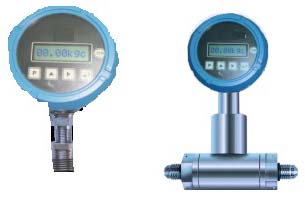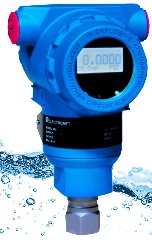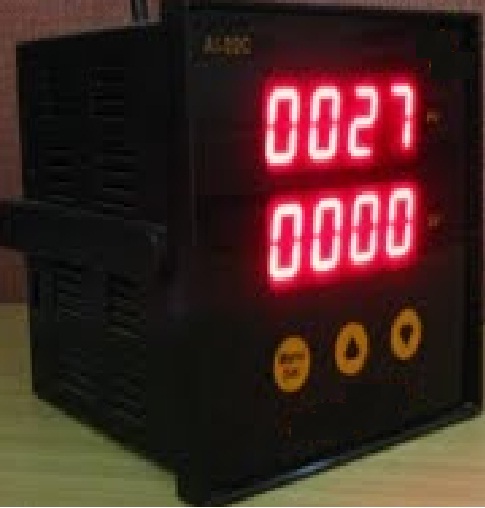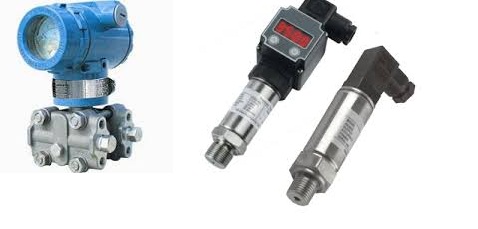Pressure Transmitters
Leading Manufacturers, Exporters, Wholesaler of Differential Pressure Transducers, Digital Pressure Gauge, Digital Pressure Transmitter, Pressure Controllers and Pressure Transmitter from Ahmedabad.
| Business Type | Manufacturer, Exporter, Supplier |
| Material | Mild Steel |
| Condition | New |
| Power | Electric |
| Application | Static Application Use |
| Feature | Accurate Results, Durable, Excellent Performance, Fine Finished, High Quality |
| Type | Differential Pressure Transducers |
| Country of Origin | India |
| Product Code | DPT |
| Port | Any |
| Payment Terms | T/T |
| Packaging Details | Box |
Differential pressure transducers, while similar to standard pressure transmitters, focus on measuring the difference in pressure between two points in a fluid or gas system. They don't provide absolute pressure readings but rather the variation between two pressures. Here's a breakdown of their typical specifications:
General Specifications
· Differential Pressure Range: This specifies the range of pressure difference the transducer can measure (e.g., ±100 Pa, -10 to +10 bar).
· Accuracy: Expressed as a percentage of full scale (%FS) similar to standard transmitters. Typical accuracy for good quality models is ±0.5%FS to ±2%FS.
· Output Signal: The most common output signal is a 4-20mA current loop, but 0-5V or 0-10V voltage outputs can also be found.
· Supply Voltage: The voltage required to power the transducer (typically 24VDC).
·
Performance Specifications
· Temperature Limits: The operating temperature range the transducer can withstand.
· Static Pressure Rating: The maximum pressure each individual input port can handle without damage (important because differential transducers have two pressure inputs). This can be higher than the differential pressure range.
· Proof Pressure: The maximum overall pressure the transducer can withstand without permanent damage (typically 1.5 to 2 times the upper limit of the differential pressure range).
· Burst Pressure: The pressure that will cause catastrophic failure (typically 4 times the upper limit of the differential pressure range).
· Response Time: The time it takes for the output to respond to a change in pressure difference (usually in milliseconds).
Environmental Specifications
· Ingress Protection (IP rating): Similar to other transmitters, this rating indicates the level of protection against dust and water ingress (e.g., IP65 for dust tight and water jets).
· Material of Construction: The materials used in wetted parts (those coming into contact with the process fluid) are crucial. Common materials include stainless steel, Hastelloy C, and Monel.
Additional Features
· Media Compatibility: The type of fluids or gases the transducer is compatible with, considering factors like corrosiveness.
· Communication Protocol (Optional): Some advanced models offer communication protocols like HART for remote configuration and diagnostics.
· Display (Optional): Some transducers may have a built-in display for local pressure difference reading.
· Calibration: Calibration is necessary to ensure accuracy. Some models offer features like zero and span adjustments for easier calibration.
Factors to Consider When Selecting a Differential Pressure Transducer
· Process Connections: The type of fitting used for connecting the transducer to the two pressure points (e.g., NPT, flange).
· Electrical Connections: The type of electrical connector for power and output signal.
· Fluid Compatibility: Ensure the materials and media compatibility specifications match the fluids in your application.
By understanding these differential pressure transducer specifications and additional factors, you can select a suitable model for your specific application that requires measuring pressure differences in liquids or gases.
| Business Type | Manufacturer, Exporter, Supplier |
| Material | Metal |
| Color | Blue |
| Display Type | Digital |
| Type | Digital Pressure Gauge |
Digital pressure gauges, compared to their analog counterparts with dials and needles, offer a digital display for pressure readings and often come with additional features. Here's a breakdown of their typical specifications.
General Specifications
· Pressure Range: The range of pressure the gauge can measure, similar to other pressure transmitters (e.g., from fractions of psi to thousands of psi).
· Accuracy: Expressed as a percentage of full scale (%FS). Typical accuracy for good quality gauges is ±0.1%FS to ±0.5%FS.
· Display: Digital gauges provide a clear and easy-to-read digital readout of the pressure measurement.
· Pressure Units: They can often display pressure readings in various engineering units like psi, kPa, bar, mmHg, and more.
Performance Specifications
· Temperature Limits: The operating temperature range the gauge can withstand.
· Proof Pressure: The maximum pressure it can handle without permanent damage (typically 1.5 to 2 times the upper pressure range limit).
· Burst Pressure: The pressure that will cause catastrophic failure (typically 4 times the upper pressure range limit).
· Response Time: The time it takes for the display to update in response to a pressure change (usually faster than analog gauges, in milliseconds).
Additional Features
· Data Logging (Optional): Some gauges can store pressure data internally or on an external memory card for later analysis.
· Min/Max Recording: Some models can track and display the minimum and maximum pressure readings recorded during use.
· Calibration: Calibration is necessary to ensure accuracy. Some gauges offer features like user-friendly calibration routines.
· Battery Life: Battery-powered gauges typically specify their operating life on a single battery charge.
· Auto-Shutoff: A power-saving feature that automatically turns off the gauge after a period of inactivity.
· Backlight: A feature for improved visibility in low-light conditions.
· Enclosure Rating (IP rating): Indicates the level of protection against dust and water ingress (e.g., IP54 for dust resistance and splash water protection).
Factors to Consider When Selecting a Digital Pressure Gauge
· Pressure Range: Choose a gauge with a range that comfortably covers the pressure you intend to measure.
· Accuracy: Select a gauge with accuracy that meets your application's requirements.
· Features: Consider additional features like data logging, min/max recording, or backlight based on your needs.
· Environmental Conditions: Choose an enclosure rating suitable for the dust and moisture levels in your application environment.
· Portability: If portability is important, consider the size and weight of the gauge.
By understanding these specifications and factors, you can select a digital pressure gauge that offers the right combination of features, accuracy, and usability for your specific pressure measurement needs.
| Business Type | Manufacturer, Exporter, Supplier |
| Material | Mild Steel |
| Driven Type | Battery |
| Color | Blue |
| Application | Industrial Use |
| Feature | Auto Controller, Durable, High Performance |
| Type | Digital Pressure Transmitter |
| Country of Origin | India |
| Payment Terms | T/T |
| Packaging Details | Box |
Digital pressure transmitters differ from their traditional counterparts in their output signal. Instead of a standard 4-20mA current loop, they provide a digital signal like I2C, SPI, or HART protocol. This allows for more complex data transmission and integration with digital control systems. Here's a breakdown of typical digital pressure transmitter specifications, incorporating elements from both analog and digital realms:
General Specifications
· Pressure Range: Similar to analog transmitters, this specifies the measurable pressure range (e.g., from fractions of psi to thousands of psi).
· Accuracy: Expressed as a percentage of full scale (%FS). Typical accuracy remains around ±0.1%FS for good quality models.
· Output Signal: This is the key differentiator. Digital transmitters use protocols like I2C, SPI, or HART to transmit digital data representing pressure readings.
Performance Specifications
· Temperature Limits: The operating temperature range the transmitter can withstand.
· Proof Pressure: The maximum pressure it can handle without permanent damage (typically 1.5 to 2 times the upper pressure range limit).
· Burst Pressure: The pressure that will cause catastrophic failure (typically 4 times the upper pressure range limit).
· Response Time: The time it takes for the digital output to respond to a pressure change (usually in milliseconds).
Digital Specifications
· Communication Protocol: The specific digital protocol used for communication (e.g., I2C, SPI, HART). This determines how the transmitter interacts with digital systems.
· Resolution: The smallest pressure change that the transmitter can detect and represent digitally. Higher resolution translates to more precise measurements.
· Data Format: The format of the digital data transmitted by the sensor, which specifies how the pressure value is encoded.
Environmental Specifications
· Ingress Protection (IP rating): Similar to analog models, this rating indicates the level of protection against dust and water ingress (e.g., IP67 for dust tight and submersion up to 1 meter).
· Material of Construction: Materials used in parts coming into contact with the process fluid (e.g., stainless steel, Hastelloy C, Monel).
Additional Features
· Display: Some models may have a built-in display for local pressure reading.
· Calibration: Calibration is necessary to ensure accuracy. Some models offer features like zero and span adjustments for easier calibration.
Factors to Consider When Selecting a Digital Pressure Transmitter
· Process Connection: The type of fitting used for connection (e.g., NPT, flange, sanitary tri-clamp).
· Electrical Connections: The type of electrical connector for power and data transmission.
· Software Compatibility: Ensure the transmitter's protocol is compatible with your data acquisition system or controller software.
By understanding these specifications and additional factors, you can choose a digital pressure transmitter that aligns with your application's requirements for accurate digital pressure measurement and seamless integration with your digital control system.
| Business Type | Manufacturer, Exporter, Supplier |
| Material | Mild Steel |
| Color | Black |
| Application | Liquid Pressure, Measuring Gas |
| Feature | Accuracy, Easy To Fit, Measure Fast Reading, Perfect Strength |
| Display Type | Digital |
| Type | Pressure Controllers |
| Country of Origin | India |
| Payment Terms | Western Union |
Pressure controllers are electronic devices that automatically regulate pressure in a system. They function by using a pressure sensor to monitor the current pressure, comparing it to a set point, and then activating control mechanisms to maintain the desired pressure level. Here's a breakdown of their typical specifications:
General Specifications
· Pressure Range: The range of pressure the controller can regulate (similar to pressure transmitters, ranging from fractions of psi to thousands of psi).
· Control Output: This specifies how the controller influences pressure. Common outputs include:
o Analog Outputs (e.g., 4-20mA current loop, 0-10V voltage) to control variable speed drives, solenoid valves, etc.
o Digital Outputs (e.g., on/off relays) to activate pumps, compressors, or alarms.
· Set Point: The desired pressure level the controller will maintain.
Performance Specifications
· Accuracy: Expressed as a percentage of full scale (%FS) for both the pressure sensor and the control mechanism. Typical accuracy is around ±0.25%FS to ±1%FS.
· Proportional Band (Deadband): The range around the set point where the controller won't activate any control actions. A narrower band provides tighter control but can lead to more frequent cycling.
· Reset: The amount of time it takes for the controller output to reach its maximum or minimum value after a change in the measured pressure.
· Response Time: The time it takes for the controller to react to a pressure deviation from the set point (usually in milliseconds).
Additional Features
· Control Algorithm: Different algorithms are used for pressure control, each with its own advantages. Common types include:
o Proportional-Integral-Derivative (PID) control: Offers precise control but requires careful tuning.
o ON/OFF control: Simpler but can lead to pressure fluctuations.
· Display: Many controllers have a digital display showing the measured pressure, set point, and control output.
· Alarms: Some models can trigger alarms for high or low-pressure conditions.
· Communication Protocols (Optional): Advanced controllers may offer communication protocols (e.g., Modbus, HART) for remote monitoring and configuration.
· Power Supply: The voltage required to power the controller (typically 24VDC).
Factors to Consider When Selecting a Pressure Controller
· Pressure Range: Ensure the controller's range covers the desired pressure regulation range in your application.
· Control Output: Choose a controller with an output compatible with your control valves, pumps, or other actuators.
· Control Algorithm: Select an algorithm (PID, ON/OFF, etc.) that best suits your application's pressure control requirements.
· Accuracy: Consider the required accuracy level for your process.
· Additional Features: Choose features like alarms, communication protocols, or a display based on your needs.
By understanding these specifications and factors, you can select a pressure controller that effectively regulates pressure within your system and aligns with your application's specific requirements.
| Business Type | Manufacturer, Exporter, Supplier |
| Material | Mild Steel |
| Driven Type | Battery |
| Color | Blue |
| Application | Industrial Use, Pressure Measurement |
| Certification | CE Certified |
| Type | Pressure Transmitter |
| Country of Origin | India |
Pressure transmitters are workhorse devices in industrial process control. They convert pressure readings into a standard electrical signal, typically a 4-20mA current loop,
that can be easily transmitted over long distances without signal degradation. This allows for remote monitoring and control of pressure in various applications. Expand more
Here's a breakdown of typical pressure transmitter specifications:
General Specifications
· Pressure Range: The range of pressure the transmitter can measure.. Ranges can vary widely, from fractions of a psi to thousands of psi (or bar).exclamation
· Accuracy: Expressed as a percentage of full scale (%FS).. Typical accuracy for good quality transmitters is ±0.1%FS..
· Output Signal: The most common output signal is a 4-20mA current loop.. Other options include 0-5V or 0-10V voltage output.
· Supply Voltage: The voltage required to power the transmitter. This is typically 24VDC.
Performance Specifications
· Temperature Limits: The operating temperature range of the transmitter.. This will depend on the materials used in its construction.
· Proof Pressure: The maximum pressure the transmitter can withstand without permanent damage.. This is typically 1.5 to 2 times the upper limit of the pressure range.
· Burst Pressure: The pressure that will cause the transmitter to fail catastrophically. This is typically 4 times the upper limit of the pressure range.exclamation
· Response Time: The time it takes for the transmitter output to respond to a change in pressure.. This is typically in milliseconds (ms).
Environmental Specifications
· Ingress Protection (IP rating): A rating that specifies the level of protection against dust and water ingress.. For example, an IP67 rated transmitter is dust tight and can withstand immersion in water up to 1 meter deep.
· Material of Construction: The materials used in the wetted parts of the transmitter (the parts that come into contact with the process fluid). Common materials include stainless steel, Hastelloy C, and Monel.
Additional Features
· Communication Protocol: Some transmitters include a communication protocol, such as HART, that allows for remote configuration and diagnostics.
· Display: Some transmitters have a built-in display that shows the pressure reading.
· Calibration: Transmitters need to be calibrated periodically to ensure accuracy.. Some transmitters have features that make calibration easier, such as zero and span adjustments.
Here are some additional factors to consider when selecting a pressure transmitter:
· Process Connection: The type of fitting used to connect the transmitter to the process. Common process connections include NPT, flange, and sanitary tri-clamp.
· Electrical Connections: The type of electrical connector used to connect the transmitter to the power supply and output signal.
By considering these specifications and factors, you can select a pressure transmitter that is suitable for your specific application.






